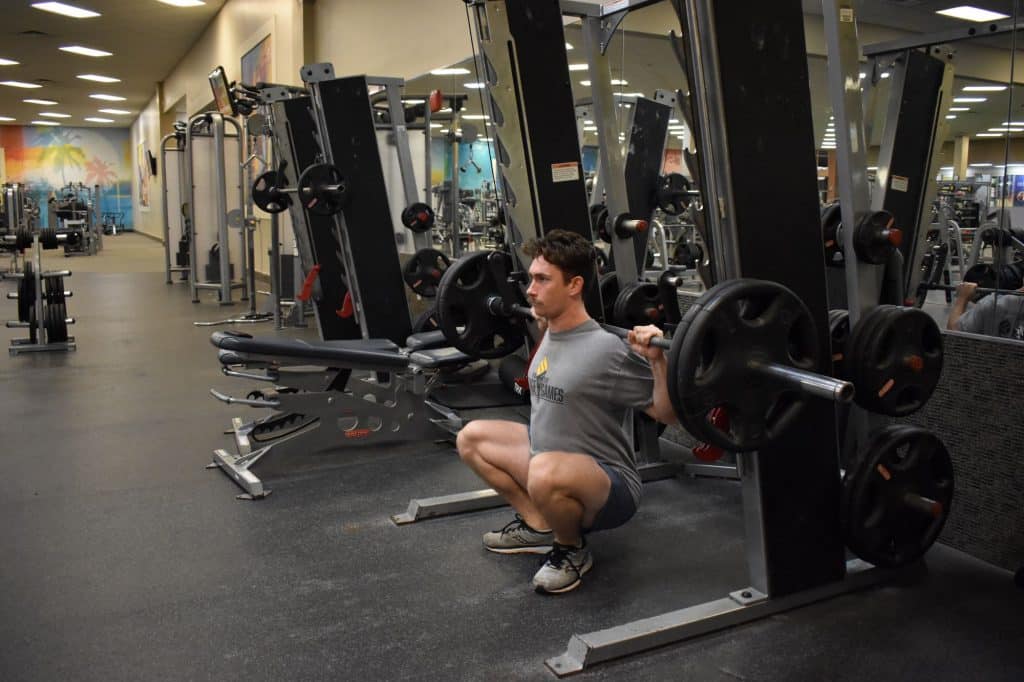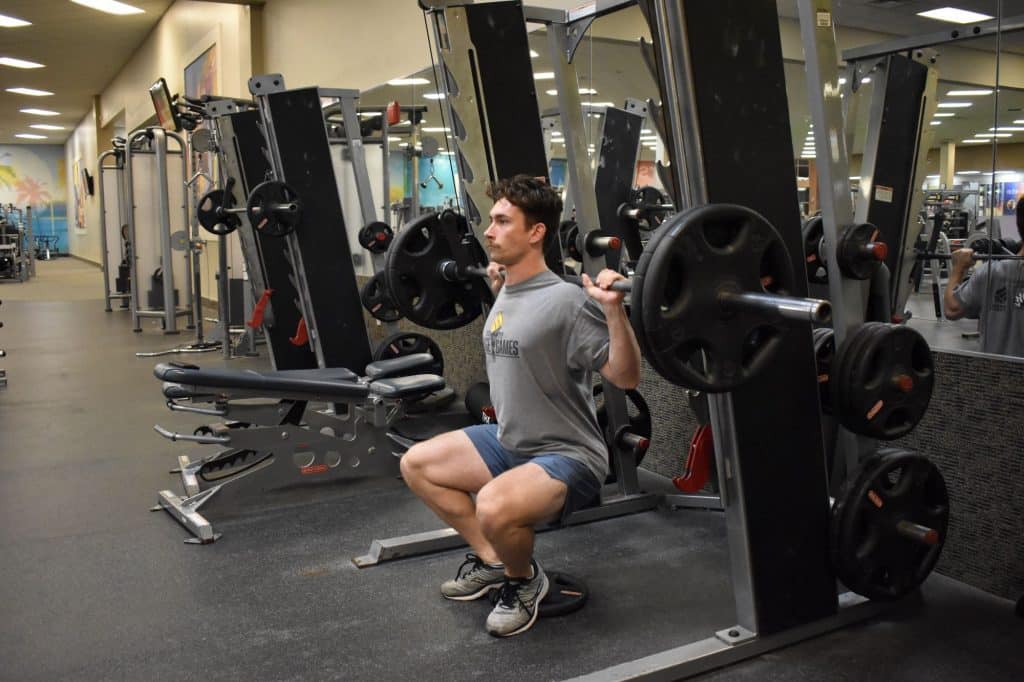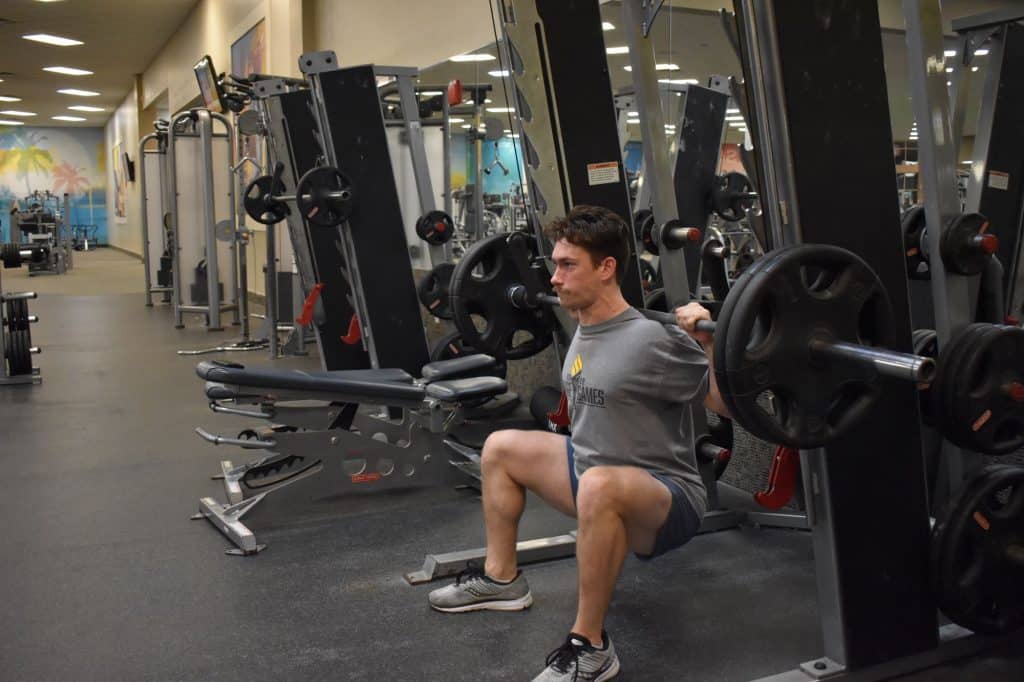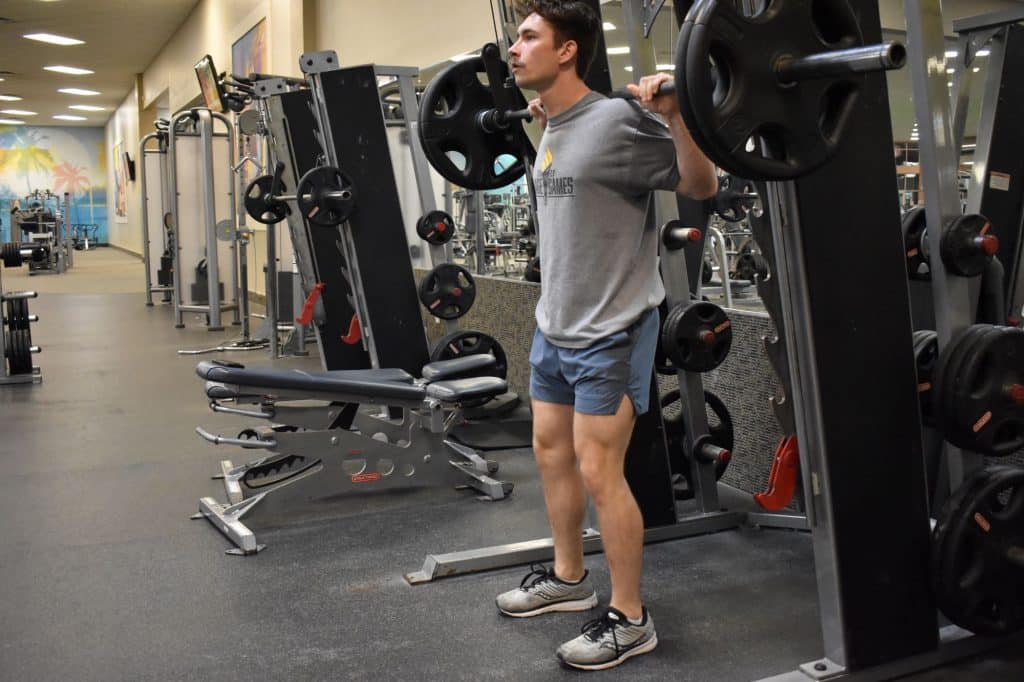Build Thunder Thighs With Smith Machine Squats
Smith Machine utilization is often looked down upon amongst the standard “gym bros.” But, when you dive into the variety of movements you can do on a Smith all while keeping the muscle under constant tension, it really is something to consider throwing into your workouts to help build muscle mass. Specifically, we will be focusing on Smith Machine squats.
Smith Machine squats are too often overlooked, but overall are a great leg exercise to build size and strength, and the amount of variety you can have on one of these is amazing. Sometimes Smith Machine squats are deemed “dangerous,” as the bar is on a fixed path, but in reality they are only dangerous when being performed incorrectly, which will be touched on later.
In this article we will cover all things involving Smith Machine Squats including how to do them, different ways to do them, and much more. Let’s dive in!
Table of Contents
- How to Perform Smith Machine Squats
- Benefits of Smith Machine Squats
- Common Mistakes
- Should You Do Smith Machine Squats
- More on Legs
Editor’s Note: Generation Iron’s content is meant to be informative and should not take the place of advice and/or supervision from a medical professional/trainer. The articles and opinions on this site are not meant to be used as diagnosis, prevention, and/or treatment of health problems. Speak with your physician/trainer if you have any concerns.
How to Perform Smith Machine Squats
You may think it is like a normal barbell squat, but it is actually much different. If you squat on a Smith Machine like you would with a barbell, there is a higher risk for injury. So let’s take a look at how to do a Smith Machine squat.
The Tools
This one is pretty simple. You need a Smith Machine and some weights to throw on it. That is pretty easy as chances are if you are in a gym and they have a Smith Machine, they have weights to go with it.
The Setup
If you are performing a basic Smith Machine squat, your feet will not be directly under the bar like they would with a barbell barbell squat. Think of this movement like a hybrid between a barbell squat and a hack squat; your feet should be about 3-6 inches forward from what they are with a barbell squat. You should probably find your footing with an empty bar first.
Place the bar on your traps and shoulders, not your neck. Much like a regular squat, your feet can be placed shoulder width apart.
Unhook the bar and begin your descent. As you descend, you’ll want to push your hips back a little as you bend at the knees. Keep your chest up, shoulder blades retracted, and your head facing forward with your core braced.
As far as depth, ideally you want to have your butt about in line with your calves at the bottom (slightly passed parallel). This will give you great stretching tension in your legs as a whole, which is an essential aspect of building muscle and strength. Unless you lack the mobility, in which case, go as low as you can and work on hip and ankle mobility in the meantime.
Don’t go too low. Again, a little past parallel is ideal, but parallel (the lifter’s thighs are parallel with the floor) is also fine.
Next, exhale and drive up from the heels of your feet. Keep your spine straight and continue to keep your core engaged during this. A good pair of lifting shoes can help with the exercise! Once you are at the top, repeat.
Now this is for the regular Smith Machine squat. We have not even touched on the different variations.
Sets and Reps
The Smith Machine is a great movement for strength, hypertrophy, or endurance. you may want to focus on strength, hypertrophy or endurance. Here are a few baseline rep ranges for each:
Strength: 3-8 reps
Hypertrophy: 6-12 reps
Endurance: 12-15+ reps
The load should challenge you in the given rep range. Meaning you are coming close to failure (1-3 reps left in the tank).
Benefits of the Smith Machine Squat
Variety
The Smith Machine squat allows for so many different variations, making it a great tool for overall lower body development. Let’s take a look at a few possible variations of the Smith Machine squat.
Duck Stance/Narrow Stance:

This stance refers to the toes pointing outward with heels closer together, or feet closer together than they would be in a normal squat while performing the exercise. Squatting with a duck stance puts more stress on the quads throughout the movement. Some benefits of this stance include:
- Increased hypertrophy of the quads
- Deeper squat
Elevated Heel:

This is performed by placing a weight, squat wedge, or other piece of equipment under the heels. Typically, this will be done with a narrow or duck stance. Some benefits of an elevated heel squat include:
- Increasing squat depth
- Less weight load on ankles and hips
- More quad activation
Wide Stance:

This refers to when the feet are placed 1.5 to 2 times the width of the hip with the toes pointed slightly outward. As a result of greater posterior hip displacement, there is more glute activation.
Some benefits of a wide stance squat include:
- Less ankle stress
- Stronger squat
Sure, you can do these with a regular barbell, so how is the Smith Machine more beneficial when it comes to these movements?
Balance
The movements listed above can provide more benefits when done on a Smith Machine due to lesser activation of the surrounding muscle groups.
A barbell squat requires you to keep the weight over your center of mass. You have to engage stabilizing muscles, and utilize proper core bracing techniques to a greater extent when squatting with a barbell rather than a Smith Machine (something a lifting belt could help with).
This means more muscle fibers are being used with a barbell squat than on the Smith machine, where less support is needed from surrounding muscles. In turn, the Smith Machine squat essentially allows for more emphasis on the legs as a whole. So, depending on your stance you are able to get more out of it for your leg development on a Smith Machine, because the stabilizing muscles are not being activated as much.
Fatigue
You can utilize the Smith Machine later in the session. Again, Smith machine squats require less support from smaller muscles and require less neuromuscular control. This makes it a safer option when you are deeper into your workout, because fatigue poses less of a risk.
Common Mistakes of Smith Machine Squats
There is plenty of room for error on a Smith Machine squat. You can really hurt yourself if you are not performing the movement correctly. Let’s take a look at a few mistakes people tend to make.
Not Racking Properly
This one is huge. People often begin to exit the Smith Machine before the bar is set back in place. Once done the movement, the hooks need to be fully settled on the knobs, and then there is no way the bar can come crashing down.
Safety Precautions
On the sides of the Smith Machine, there are stops that can be set to stop the bar from coming down any further. However, sometimes they are set too low which can result in the bar crashing down upon you. This is not ideal.
Proper Form
Too often, good form is being abandoned on a Smith Machine with the ideology that the machine’s position already has the lifter set up properly, and will guide them along. This is not the case. This can result in misaligned feet, back rounding, etc. The lifter should have their feet be mirror images of each other no matter what stance you are using, and you always want to keep a neutral spine and tight core even though stabilizing muscles are not as utilized in this movement.
Pro Tip: Check out this video from Renaissance Fitness for some more information on Smith Machine squat mistakes:
Should You Do Smith Machine Squats?
The Smith Machine squat is great for overall leg development. Specific muscles in the legs are being targeted better on a Smith Machine than a regular barbell squat, as the surrounding muscle groups are not being utilized as much on the Smith. You don’t need to include it in every leg day session, but it is great to throw into your training program.
Wrap Up
Overall, Smith Machine squats are great for developing your legs! Make sure to use proper form and really push yourself!
Will you be giving Smith Machine Squats a try? Let us know in the comments below. Also, be sure to follow Generation Iron on Facebook and Twitter.
References
Hamstrings. Physiopedia. (n.d.). Retrieved September 16, 2022, from https://www.physio-pedia.com/Hamstrings
Quadriceps muscle. Physiopedia. (n.d.). Retrieved September 16, 2022, from https://www.physio-pedia.com/Quadriceps_Muscle#:~:text=The%20quadriceps%20femoris%20is%20a,anterior%20compartment%20of%20the%20thigh.









